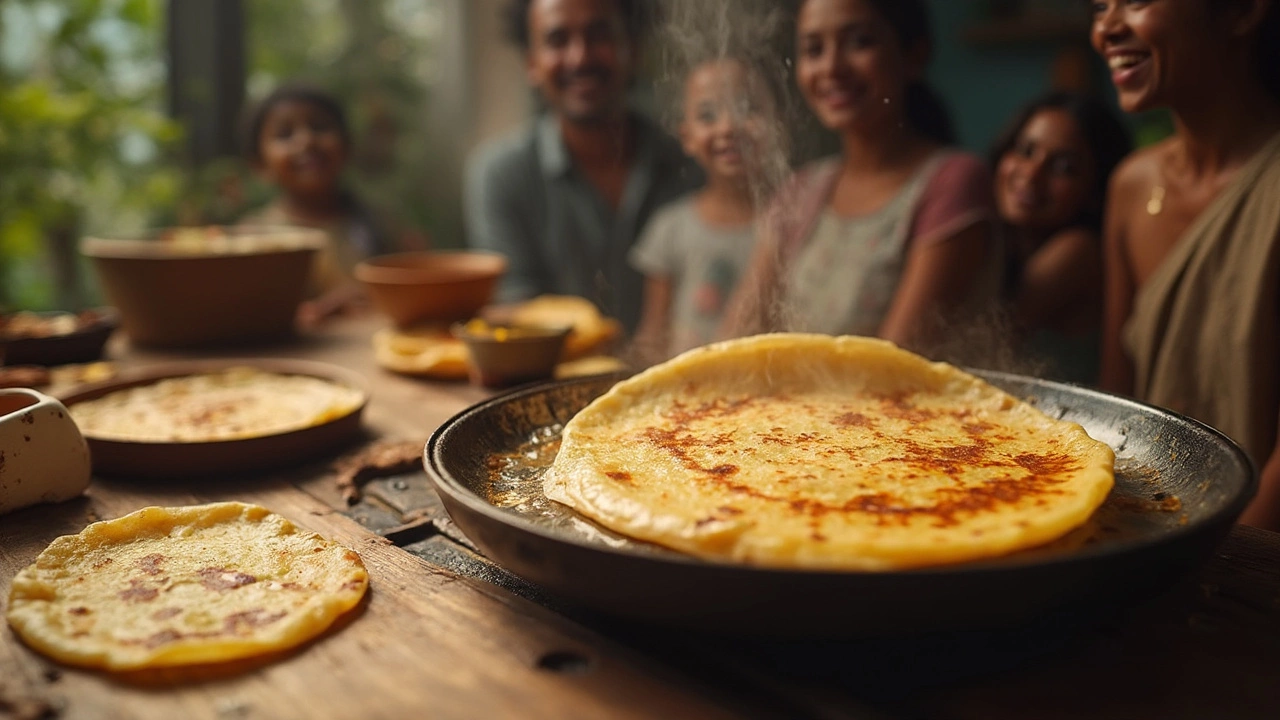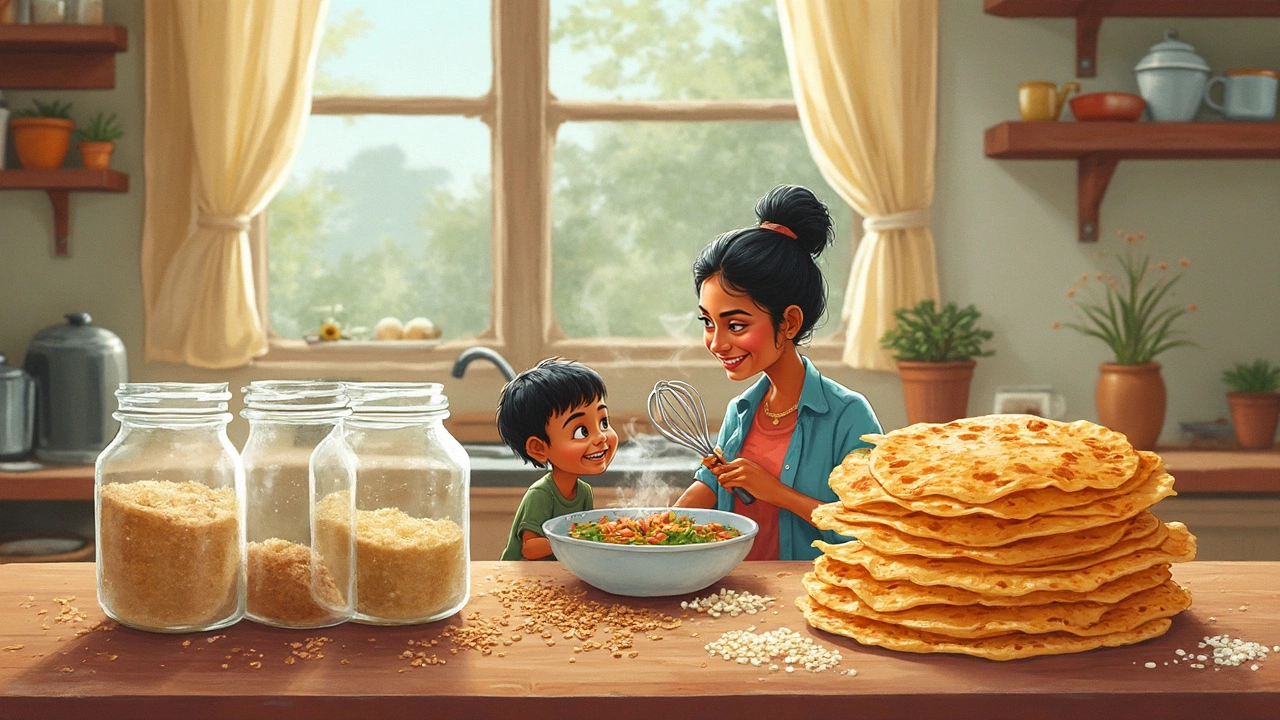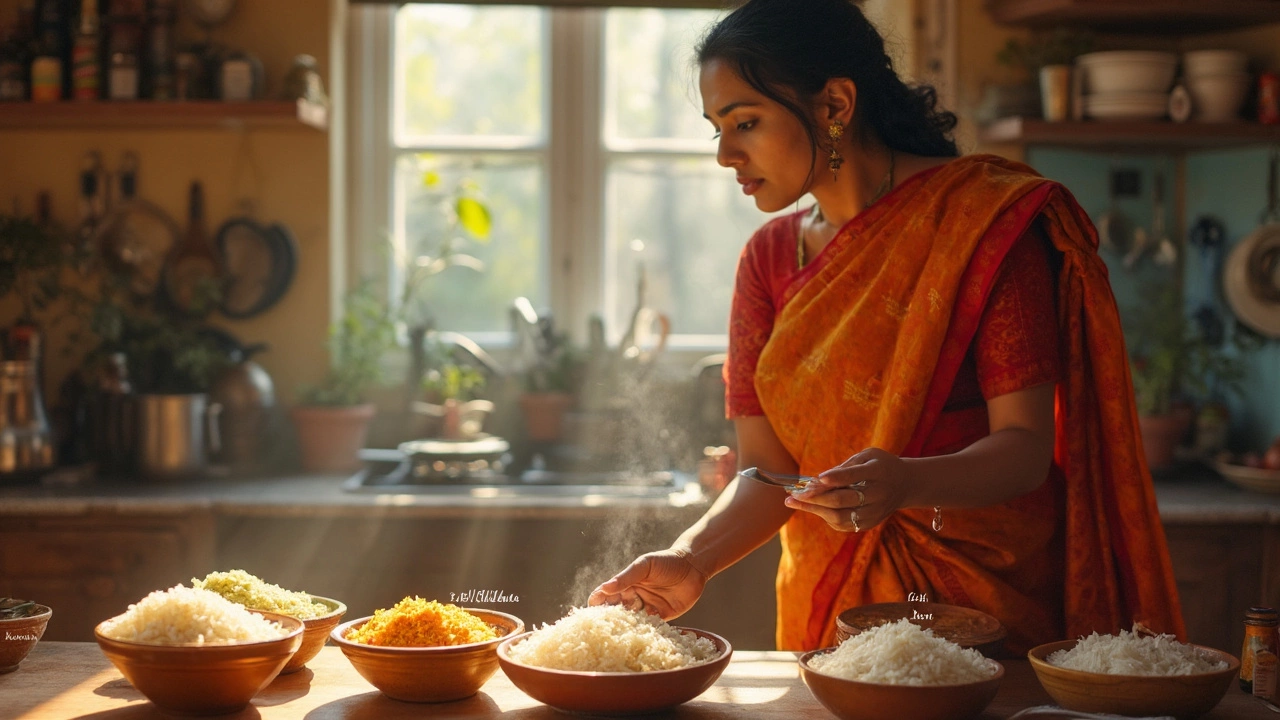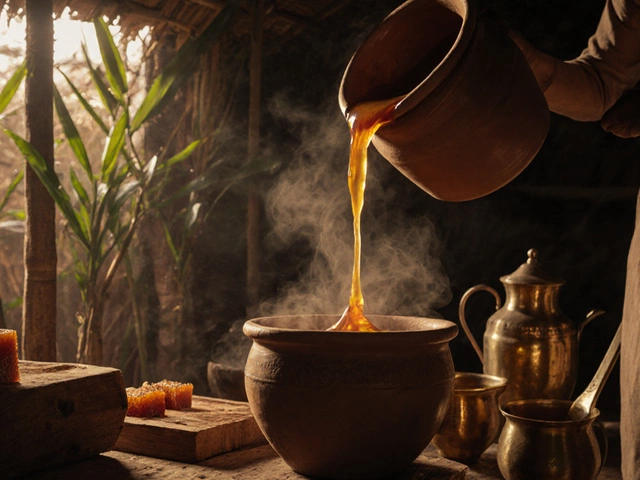When you’re on a hunt for the right rice to make *dosa batter* in the USA, it can feel like you’re chasing a moving target. Walk into any Indian grocery outside India—let’s say somewhere near New Jersey or California—and you’re greeted with shelves packed with mysterious labels: Sona Masoori, Idli rice, Jasmine rice, even Arborio. It’s confusing, especially if you’re after that golden, crispy, paper-thin dosa, just like the ones served at crowded breakfast spots in Chennai or Bengaluru. The problem gets trickier if, like me, you once tried making dosas using leftover Basmati rice from a curry night (the results: tragic). So, which rice should you trust when you’re thousands of miles from the South Indian heartland? Fact: While dosa may look simple—just a crepe, right?—it's all about choosing the right grain. And if you nail the rice, your dosa will sing!
Understanding the Science: Why Rice Choice Matters in Dosa Batter
People have been perfecting dosas for over 2,000 years. In South India, home cooks pass down their dosa wisdom like precious family silver, and rice is the star of that secret. Most traditional dosa recipes use a short-grain, parboiled rice called ‘Idli rice’. It’s loved for its starchy surface that helps ferment the batter (a must for those trademark sour notes and crispy edges). In the USA, unless you’re near a large South Asian community, Idli rice might not be the easiest to find. And here’s where the science comes in: Not all rice is equal for dosas. Starch content, grain texture, and even the rice’s aroma can all change your batter’s performance.
Let’s break down what you actually want: sticky, but not gluey; enough starch to make the batter ferment like crazy, but not so much it becomes gummy; a softness that makes your dosas paper-thin and crispy at the edges while staying tender inside. The dosa batter rice you pick changes all these things. In India, Idli or parboiled rice is everywhere because it gives you these qualities. In America, you have choices. Some rice varieties that work great:
- Parboiled rice: The closest cousin to Indian Idli rice you’ll find in the States. Bob’s Red Mill even stocks parboiled rice that is incredibly similar to the Indian version, and most Indian stores carry American-grown ones too.
- Sona Masoori: A medium-grain rice found in Indian sections or Asian supermarkets. It has moderate starch and gives a reliable texture to dosa batter.
- Jasmine rice: South East Asian stores have this everywhere. It works in a pinch, but because it’s aromatic and a bit sticky, you might get a slightly different taste—still, totally worth experimenting with if it’s all you have.
- Rice blends: Mixing short and medium grains can strike the right balance between spreadability and texture.
Now, why no Basmati? Basmati is long-grained, too dry, and light—this means it won’t let your batter ferment or crisp up as needed. Sticky rice or glutinous rice? Gives you gooey, chewy pancakes. Hard pass. The essential thing is to aim for un-aged, non-basmati rice with a reasonable amount of starch.

The Hunt for Authentic Dosa Rice in US Stores
Back in Brighton, I remember the first time I tried explaining to Darren why I was so passionate about a 5kg bag of “Idli rice” from the Asian grocer. He thought all rice tasted the same! But, trust me, there’s a difference. In the USA, finding the *best rice for dosa* isn’t hard if you know what labels to look for.
- At Indian grocery stores, look for "Parboiled rice" or “Idli rice”—brands like Laxmi, Swad, Priya, and even India Gate are common. Some Udupi restaurants even sell their own house brand.
- Thai or Vietnamese supermarkets? Jasmine rice or plain long-grain broken rice can work if you can’t find Indian varieties. Try choosing shorter, plumper grains if you have options—avoid anything labeled “extra long grain.”
- For the adventurous, try bulk parboiled rice from Costco or Sam’s Club. It’s cheaper and surprisingly good for large batch dosa batter.
But what should you absolutely avoid? Steer clear of “ready-to-eat” or “instant” rice. Those have already been cooked, and they’ll ruin your batter. Similarly, avoid pre-flavored rice or anything marketed for sushi or risotto (like Arborio), as these can be too sticky or too thick. Your best bet is to check the ingredients and origin: if it’s labeled “parboiled” and comes from an Asian brand, it’s almost always a safe purchase.
One tip: Some American stores call parboiled rice "converted rice" (Uncle Ben's is a famous brand). While it’s okay in emergencies, it’s not as good as true South Indian parboiled varieties—the grains are often longer and have less starch, sometimes leading to flat dosas. If you want the real deal, go online. Amazon, Patel Brothers, and other Indian e-grocers now deliver parboiled/Idli rice right to your door in most US cities. Just double-check the reviews: you want soft (not hard), smallish grains that say “for Idli/Dosa.”
If you’re splurging, organic Idli rice can be ordered, but let’s be real—dosa tastes heavenly using just the everyday stuff. The game-changer is resisting that temptation to try “healthy” alternatives like wild rice or red rice for full batches. Save those for upma or salads. For authentic dosas, stick to the classic varieties mentioned here.

Expert Tips: Getting Your Dosa Batter Right Every Time
The rice is just the beginning. A dosa batter’s magic rises and falls on how you blend, ferment, and cook it too. Here are some solid, time-tested dos and don'ts I’ve picked up through lots of trial and a bit too much error:
- Soak the rice and urad dal separately: Most traditional recipes say 4-6 hours, but overnight works wonders for texture and flavor. If it’s winter or your kitchen runs cold, dunk the soaked mix in warm water or set it near your oven overnight.
- Grinding matters as much as rice: Blenders in the US are powerful—sometimes a little too powerful. If you have a wet grinder (lucky you!), use it. Otherwise, pulse the soaked rice and dal in a regular blender, adding water slowly, until it’s smooth but slightly gritty. You want a pancake batter consistency, not a milkshake.
- Fermentation is key: In India, batter ferments in a few hours because of the warm weather. In the US? Plan for 10-18 hours, especially in colder regions. Stick your batter in the oven with just the oven light on, or place it near a heating vent with the lid cracked open. Some people pop a slice of bread or a pinch of sugar to help jumpstart the microbes, but honestly, plain patience works just as well.
- Test your batter: It should smell slightly sour, bubble when stirred, and double in volume. If not, give it a gentle mix and another hour or two—it might just need more time.
- Getting dosas crisp: Always use a hot nonstick pan. Splash a bit of water; it should sizzle and evaporate right away. Pour a ladleful of batter, spread evenly, drizzle oil at the edges, and resist flipping too soon. When golden at the base, fold and serve. That’s when you know you’ve nailed it.
Craving some stats about homemade dosa batter? Here’s a handy look at common American rice brands and how they perform for dosa, based on user experiences and cooking test results from the summer of 2024:
| Rice Brand | Type | Fermentation Time (Avg.) | Crispiness Rating (1-5) | Availability in US |
|---|---|---|---|---|
| Laxmi Parboiled (Idli Rice) | Short/Medium Parboiled | 10-14 hrs | 5 | Widely in Indian stores |
| Swad Sona Masoori | Medium Grain | 12-16 hrs | 4 | Indian/Asian Markets |
| Jasmine Rice (Three Ladies Brand) | Long Grain Aromatic | 14-18 hrs | 3 (floral taste) | Most Asian groceries |
| Uncle Ben's Converted | Long Grain Parboiled | 12-16 hrs | 2 (less crispy) | Supermarkets nationwide |
One last tip—I started making extra dosa batter on weekends so Darren could have surprise dosas during his work-from-home days (he swears they keep his meetings bearable). You can easily double your recipe, then store half the batter in the fridge for up to four days. If the batter thickens, stir in a splash of water. If the sourness is too much, add a pinch of rice flour before cooking. Home hacks, Brighton-style!
So, if you're whipping up homemade dosas in the USA, the real answer is: grab parboiled or Idli rice wherever you find it, Sona Masoori if you can't, and never let a hard-to-find South Indian specialty stop your breakfast cravings. The grain matters—but the fun is in the experimenting. And trust me, when you hit the right combo, you’ll want to make dosa a weekly tradition.

